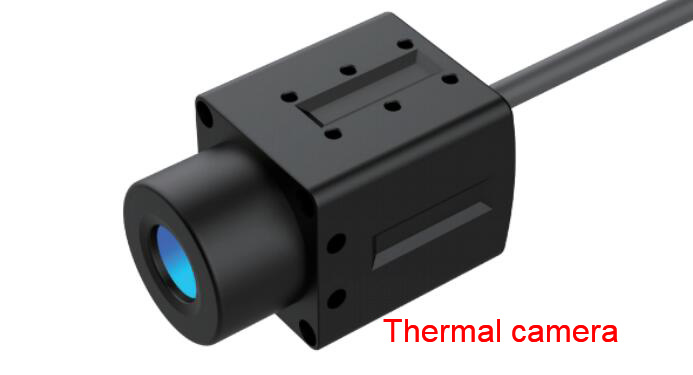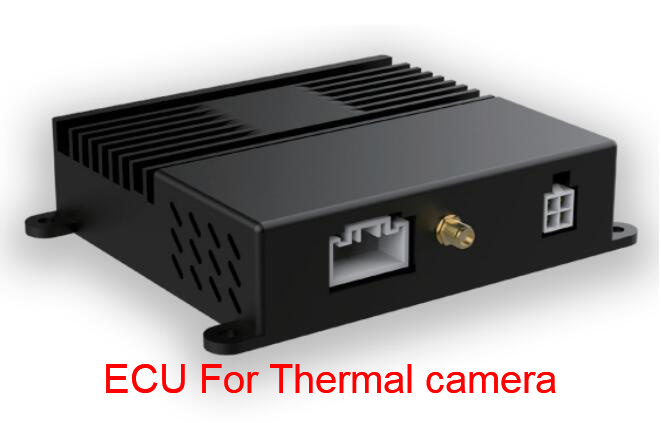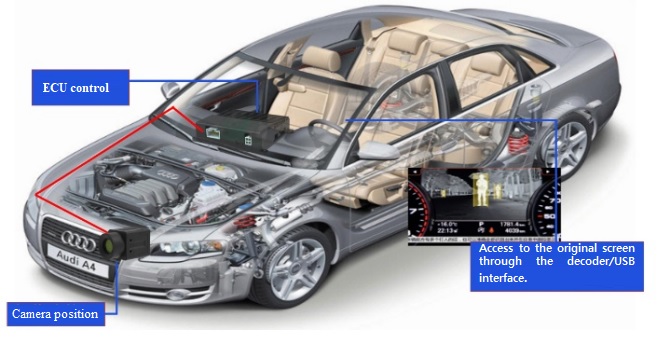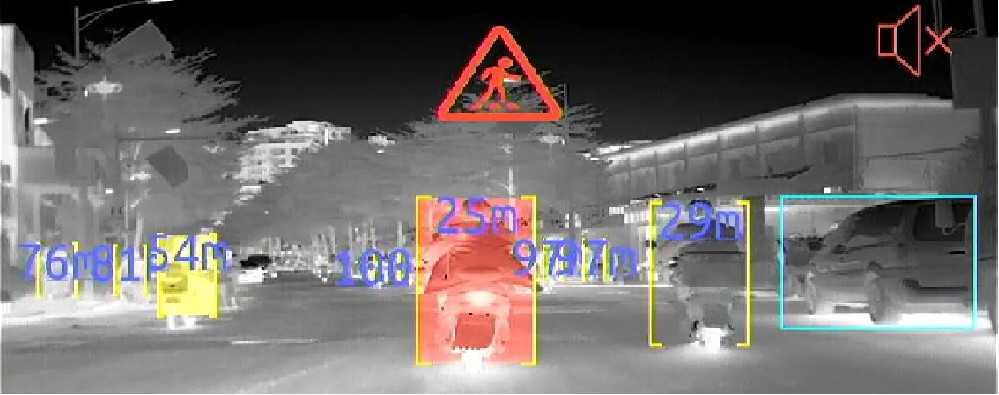Drive Safe at Night with a Thermal Camera Night Vision System

Introduction
Driving at night can be a daunting task, especially when the visibility is low due to poor lighting or bad weather conditions. However, with the Universal Car Thermal Imager Night Vision System, drivers can improve their driving safety and reduce the risk of accidents. This advanced system is equipped with a thermal imaging camera that detects far-infrared heat radiation emitted by vulnerable traffic participants such as pedestrians, animals, and cyclists, forming a video image that enhances drivers' view range. With its innovative technology and features, this system provides an additional layer of safety for drivers who need to navigate through complex road conditions at night.
The Universal Car Thermal Imager Night Vision System is an essential tool for any driver who wants to ensure their safety on the road. It offers advanced pedestrian recognition, which provides advance warning to drivers about potential dangers on the road ahead. This feature enables drivers to easily deal with complex road conditions at night and drive safely to avoid dangerous situations.
In addition to improving driving safety, the Universal Car Thermal Imager Night Vision System also offers several other benefits that make it a must-have for car enthusiasts. For instance, it enhances your overall driving experience by providing clear visibility during nighttime drives. Moreover, it reduces stress levels associated with driving in low-light conditions by offering peace of mind knowing that you have an extra set of eyes on the road.
Benefits of the Universal Car Thermal Imager Night Vision System
The Universal Car Thermal Imager Night Vision System is a technological innovation that has revolutionized the driving experience, especially during poor lighting or bad weather conditions. One of the primary benefits of this system is the reduction of accident risk. With the thermal imaging camera, drivers can detect far-infrared heat radiation emitted by vulnerable traffic participants such as pedestrians, cyclists, and animals. This feature allows drivers to see beyond what their headlights illuminate and anticipate potential hazards before they occur.
Moreover, the Universal Car Thermal Imager Night Vision System significantly improves driving safety. The system's advanced pedestrian recognition technology can provide advance warning to drivers when it detects a pedestrian in front of the car. This feature enables drivers to easily deal with complex road conditions at night and drive safely to avoid dangerous situations.
Another benefit of this system is its ability to enhance view range. The thermal imaging camera can detect heat signatures from up to 300 meters away, providing drivers with an extended view range that goes beyond what traditional headlights offer. This feature is particularly useful when driving in areas with low visibility due to fog or heavy rain.
The Universal Car Thermal Imager Night Vision System also offers detection of vulnerable traffic participants. It can detect not only pedestrians but also cyclists and animals on the road. This feature helps prevent accidents caused by collisions with these vulnerable road users who are often difficult to spot with traditional headlights.
Additionally, this system comes equipped with advanced features such as automatic brightness adjustment and high-resolution video recording capabilities that allow for clear footage even in low light conditions.
In summary, the Universal Car Thermal Imager Night Vision System offers numerous benefits that make it an essential addition for safe night driving. Its ability to reduce accident risk, improve driving safety, enhance view range, and detect vulnerable traffic participants makes it a must-have for any driver who values safety on the road.
Advanced Features and Technology
The Universal Car Thermal Imager Night Vision System is equipped with advanced features and technology that make it an indispensable tool for safe night driving. The system's thermal imaging camera can detect far-infrared heat radiation emitted by vulnerable traffic participants, such as pedestrians and animals, and form a video image that improves drivers' view range. This feature is particularly useful during low-light or bad weather conditions when visibility is poor.

The system's far-infrared heat radiation detection capability enables drivers to see beyond the range of their headlights. Even in complete darkness, the thermal imaging camera can detect the heat signatures of living beings up to several hundred feet away. This advanced technology provides drivers with a significant advantage when navigating complex road conditions at night.

In addition to its thermal imaging capabilities, the Universal Car Thermal Imager Night Vision System also features pedestrian recognition technology. This technology uses algorithms to identify and track pedestrians on or near the road ahead, providing drivers with advance warning of potential hazards. Pedestrian recognition technology has been shown to reduce accidents involving pedestrians by up to 35%, making it an essential safety feature for any driver.

The system's video image formation feature allows drivers to see more clearly in low-light conditions than they would with traditional headlights alone. The video image is displayed on a high-resolution screen located on the dashboard, providing drivers with real-time information about their surroundings.
Installation of the Universal Car Thermal Imager Night Vision System
Installing the Universal Car Thermal Imager Night Vision System is a straightforward process that can be done by a professional or DIY. The system is compatible with most car models, making it easy to install without any modifications to the vehicle's structure. However, it's essential to ensure that the installation process follows the manufacturer's guidelines and instructions.

Before installing the system, it's crucial to identify an ideal location for mounting the thermal camera. The camera should be mounted in a position that provides an unobstructed view of the road ahead and doesn't interfere with other car components. Once you have identified an ideal location, mount the camera using the provided hardware and wiring.
After mounting the camera, connect it to the display screen and power source. Depending on your car model, you may need to run wires through hidden areas of your vehicle or remove interior panels to access electrical connections. If you are not familiar with electrical systems, it's advisable to seek professional help.
The cost of installing a Universal Car Thermal Imager Night Vision System varies depending on your car model and installation method. DIY installation may cost less than hiring a professional installer; however, it may void your warranty if not done correctly. Professional installation costs may vary from one installer to another; therefore, it's essential to get quotes from different installers before settling on one.

Precautions for Use
While the Universal Car Thermal Imager Night Vision System is a valuable addition to any vehicle, there are some precautions that drivers should keep in mind when using it. First and foremost, it is essential to use the system properly, following all instructions provided by the manufacturer. This includes keeping the camera lens clean and free of obstructions, as well as ensuring that the system is mounted securely and aimed correctly. It is also important to remember that while the system can greatly improve visibility at night, it does have limitations. For example, it may not be able to detect certain objects or obstacles in extreme weather conditions or other challenging environments. Additionally, drivers should be aware that the system may not always provide a complete view of their surroundings and should always remain alert and attentive while driving. Finally, regular maintenance and cleaning of the system are crucial for optimal performance and longevity. By following these precautions, drivers can enjoy the many benefits of the Universal Car Thermal Imager Night Vision System while staying safe on the road at night.
 CN
CN English
English





